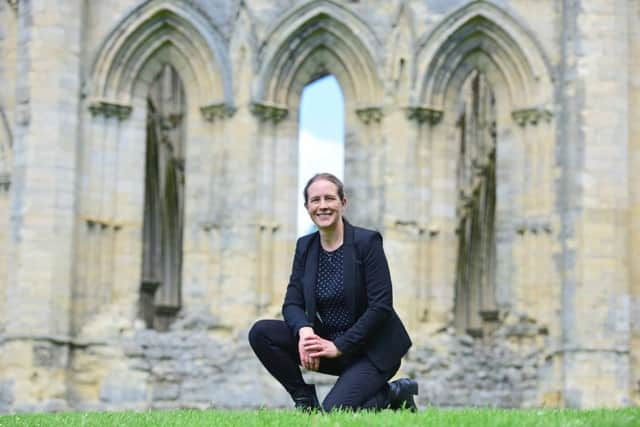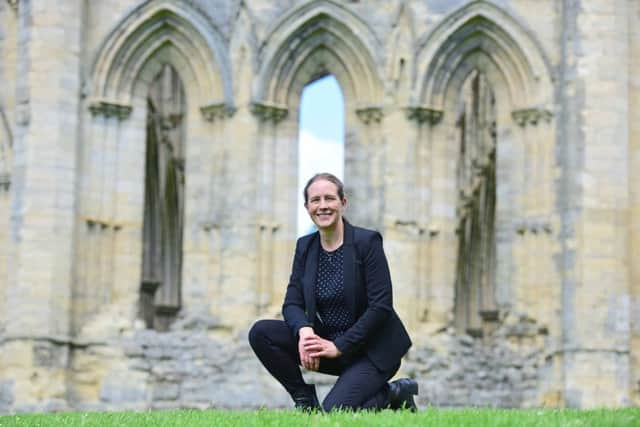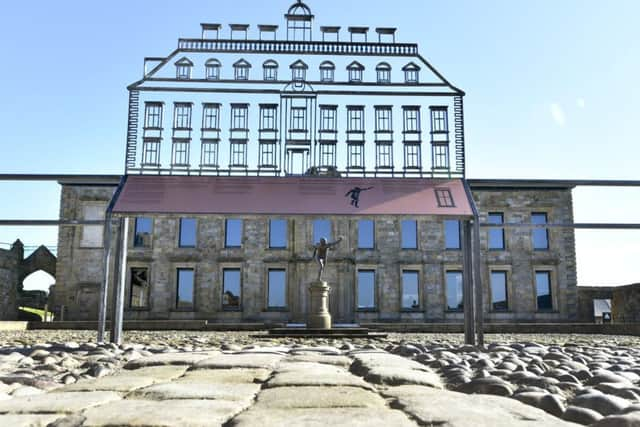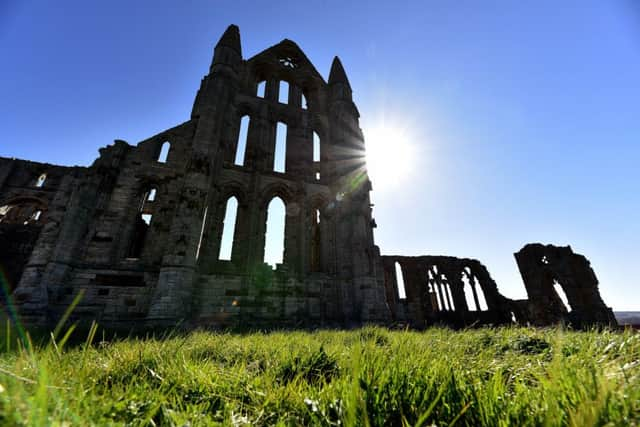Whitby Abbey has been given a fascinating makeover


Turn away to catch your breath and you will be rewarded with one of the finest panoramas in Yorkshire, as Whitby tipples down the slopes to the harbour, transformed by perspective into a model village.
Wind and salty coastal air have battered and blessed this holy headland for 1,500 years.
Advertisement
Hide AdAdvertisement
Hide AdThe Benedictine abbey was founded here after the Norman Conquest and its remaining outline tells an ancient story about Christianity in Britain, along with a tale about how two Easters became one.


Susan Harrison, curator of Whitby Abbey, is part of the team that has been transforming the Abbey. Nearly £1.6m has been spent by English Heritage on improving the attraction and updating the museum.
First, let’s pick up that Easter story. The Synod of Whitby in 664 helped to lay down the path Christianity would follow, while also settling an argument over Easter.
Easter Sunday is a movable feast whose date is determined by the cycle of the moon. Back in 664, Whitby, or Streaneshalch as it was then known, was at the heart of the mighty Anglo-Saxon kingdom of Northumbria, which followed two strands of Christianity: the Roman and the Celtic traditions.
Advertisement
Hide AdAdvertisement
Hide AdThe competing churches couldn’t agree on a date for Easter, which could fall on dates up to four weeks apart.


“King Oswiu followed the Celtic culture while his wife followed the Roman,” says Susan. That left one still fasting for Lent while the other was celebrating Easter.
Oswiu asked the assembled synod who could be considered the gatekeeper of heaven, and when he was told that the job fell to St Peter, he ruled in favour of Rome.
By the 16th century, the Chomley family occupied the abbey grounds, moving in after the dissolution of the monasteries. The family bought the abbey’s buildings and the core of its estate, settling into what must have been one of the most splendidly spooky addresses in Yorkshire. They adapted the former abbot’s lodgings into Cholmley House.
Advertisement
Hide AdAdvertisement
Hide AdThe visitor centre and shop sit in what was once the family’s banqueting hall. As part of the modifications, the centre and shop have been extended across the whole ground floor, while the overhauled museum now occupies the second floor.


Other changes include the lodge at the top of those lung-troubling steps being turned into a coffee shop, and a general cheering up of the courtyard. The north and south entrances to the abbey were thought to feel too austere, so trees have been planted in the once stark courtyard, along with herbs such as sage and lavender, suggesting the medieval monastic infirmary.
With the museum having now all moved upstairs, this is where Susan’s work begins. “My role is the museum inside Cholmley House,” she says.
“On the first floor the key messages are about the very long history of Whitby Abbey, from the Anglo-Saxons and the Synod of Whitby in 664.”
Advertisement
Hide AdAdvertisement
Hide AdSusan explains that there are three zones in the revamped museum.
“The first is about the headland and its people, its geography and its geology from pre-history to modern times.
“The second is the spiritual place and the third is cultural inspiration.”
The last zone traces the inspiration Whitby has offered to artists and writers, from the earliest myths and legends up to Bram Stoker’s Dracula, who long ago sank his fangs into the Whitby story. One new acquisition is a rare signed first edition of Bram Stoker’s Gothic novel.
Advertisement
Hide AdAdvertisement
Hide AdSusan also points to more modern local tales, such as the Whitby Witches trilogy by Robin Jarvis. Other literary links include Sir Walter Scott’s epic 1808 poem Marmion, while the ruined abbey has also inspired artists and writers as varied as JMW Turner, JRR Tolkien and Lewis Carroll.
The museum tells the rich history of the abbey in new and sometimes playful ways, lingering on the sensory element of the place, with waves and bells – and a new hi-tech tour guide.
“We have an ammonite quest,” says Susan. “Visitors hold an interactive ammonite in the palm of their hand.”
Using the ammonite-shaped device, visitors set off on a modern treasure hunt in search of ancient history and hidden archaeology.
Advertisement
Hide AdAdvertisement
Hide AdThe device is used like a sort of metal-detector to map what cannot immediately be seen, including the lost cloister.
“When you discover something, it gives a haptic beat,” says Susan.
In other words, the ammonite guide shakes to let you know you have arrived at an important juncture in history or archaeology.
The new museum will also display ammonites known as snake stones – said, in folklore, to be a plague of snakes supposedly turned to stone by the Christian saint, Hilda of Whitby.
Advertisement
Hide AdAdvertisement
Hide Ad“Victorian collectors used to collect the ammonites and carve heads into them,” says Susan
The new museum also features 8ft-high copper characters from Whitby’s long history, a trail of illuminated quartz pebbles and a Dracula toy theatre by Edward Gorey.
Andrea Selley, director of English Heritage properties in the north, is equally excited by the transformation.
She says it’s all about improving the visitors’ experience and ensuring the story behind this venerable site continues to be told.
“The new museum and better interpretation on site allows us to tell the story of one of Yorkshire’s most iconic abbeys – an abbey steeped in rich history.”